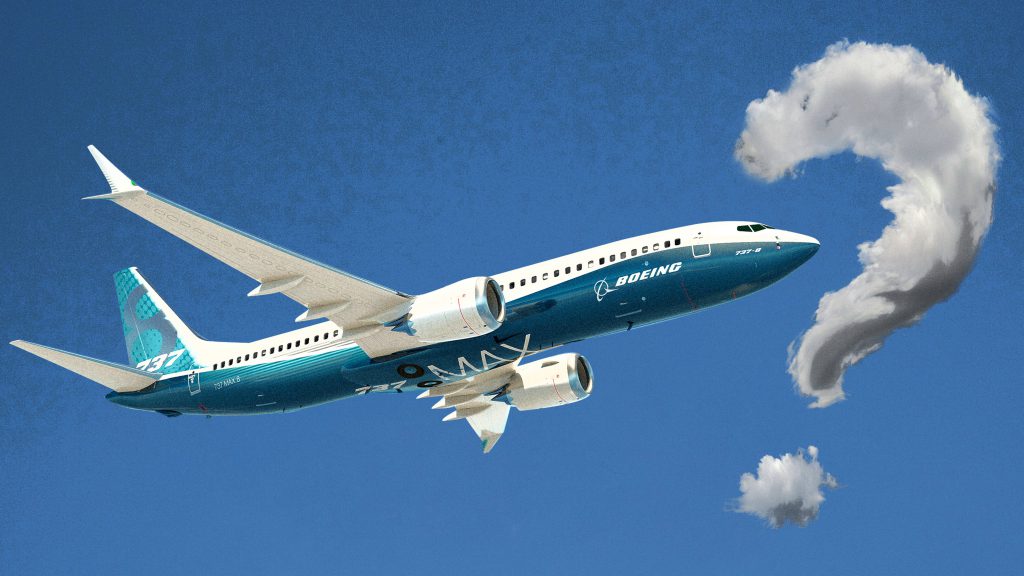
Remember Minority Report starring Tom Cruise? Set in the future Cruise plays a cop charged with detecting crimes. Sounds pretty regular so far right? The plot twist is he stops the crime before it happens. Something to do with psychics floating around in a sensory deprivation chamber and reading brain waves.
That is what the aviation industry has been trying to copy. Manufacturers like Boeing and Airbus are in contact with all their planes all the time. Sometimes they send the crew a solution before they know they have a problem. Prevention better than cure right?
The fact is Boeing may have known what was wrong with the Max 8 before the two recent crashes. In the drone industry like with aviation we are very safety oriented and stick to the letter of CAA law. This isn’t looking good from an industry safety perspective.
If they did know what was wrong with the Max 8, those two planes shouldn’t have crashed.
Engine makers like Rolls Royce are “pinged” by their engines every few seconds. If one of their $10 million babies is running a temperature they can see and they are in contact with the crew in seconds, suggesting causes and fixes. By the time the plane lands, maintenance is booked, parts are ordered and waiting to go on.
If it can be completed during the turnaround, all the better. Time is money. So imagine the disaster financially if all the world’s Boeing 737 Max 8s are grounded. That is the scenario right now.
It will hurt Boeing if it stretches out for months. Boeing is on an increasing high sales-wise and the Max 8 is a key player in their strategy for the future.
A very successful life
The 737 has had a very successful life since it was first introduced in 1967. Over 6,000 have been built. The 737 Max 8 is the most powerful, economical, fastest version yet.
Therein lies the problem. To accommodate ever larger engines which the airframe was never designed to carry, 737 engine cowlings (the metal tubes the engines sit in) were flattened off underneath some years ago to ensure the larger engines didn’t hit the ground during take off or landing.
The latest, larger engines are mounted further forward on the wings. This has pushed the balance of the plane forward. To compensate Boeing designed some little flaps on the rear tail plane horizontally to give more control to the angle of the plane in flight.
If the nose rises too much, the little flaps would sense this and move automatically to compensate. Unfortunately independent engineers calculate that the motors driving the flaps are about four times too powerful. The new engine covers or nacelles produce some extra lift in the climb, a first for the 737 but this makes the problem worse.
If a Max 8 approaches the stall angle of 14 deg, the trim stabilisers will force the nose down. The pilot can switch off the stabilisation system at this point to stop this happening.
There were other new additions to the 737’s flaps and spoilers system to make it safer and more efficient.
Here’s where the plot thickens. Boeing were aware of a tendency for the flaps to overcompensate. US pilots were telling them about the problem where the flaps would push the nose down automatically in a climb. They could override the input from the flaps by switching off the MCAS system but the software would reset and do it again.
The advice was to disengage these flaps, known as trim stabilisers, in other words completely switch off the system Boeing had added to their own planes.
But this advice doesn’t seem to have reached the ears of pilots working for Lion Air in Indonesia or Ethiopian Airlines. Either that or they didn’t understand it. Or were not trained properly.
I must confess the physics involved in the MCAS system are quite complicated and counter-intuitive. With the system engaged, the more the pilot pulls the stick back to gain height, the more the automatic system fights him.
No mystery
The second part of this riddle is the FAA in the US allowed Boeing to oversee their own fix. This is unusual and in this case proved fatal for the two Max 8s which crashed. This was probably because it was deemed an operational issue which could be sorted non-fatally as they knew what the problem was. But anyone making out the crashes were unrelated or a mystery would be acting a little ingenuously shall we say?
A very expensive, tragic mistake. These sort of glitches are quite commonplace on new planes. Manufacturers provide workarounds over time and problems are sorted. There was an issue with lithium ion batteries used on the new 787 Dreamliner. There were some fires in flight and dozens of emergency landings. They fixed the problem but kept the fleet flying.
There were a series of quite serious problems with the Airbus 380 Superjet when it first came into service. There were a few engine failures and a very nasty engine explosion on a Quantas jet. An engine fan blade went through the wing, destroying the engine in the process and rupturing a fuel tank.
The jet had to circle Singapore’s Changi Airport for four hours while it dumped 200 tons of fuel which was also streaming from the ruptured wing tank. Mercifully it didn’t explode and they landed with no hydraulics, one engine on full power, one destroyed, one stuck on 60% thrust and one still functioning normally.
When the A380 lumbered to a halt just 100 metres from the end of the 4,000 metre runway, the engine was still screaming at full power.
Miraculous landing
Pretty miraculous and Quantas grounded their 380s for a short time. Rolls Royce traced the fault to a tiny oil pipe the size of a vape which had become blocked and stopped lubricating the shaft on which the blades spin round. It seized up and kaboom.
But the 380 was back in the air in weeks for Quantas and all the others around the world got a fix without missing a beat.
I have history with the 737 – which is why I am particularly interested in this story – I made a tv programme about a previous problem which caused two to crash. It took almost a decade to get to the bottom of what caused it.
It was a trim motor. Just like the current problem apparently. How odd is that? The 737 is blighted by problems with control surface issues.
What made this so strange was as soon as I heard about the crashes and saw the data about what the two planes did before going nose in I felt sure I already had the answer.
Call it a hunch or whatever. But I knew straight away it was going to be something to do with trim stabilisers. In the case of flight 427 and flight 585 , and flight 517 which avoided a crash, the jammed trim flap made the planes turn upside down at low speed. Two flipped over and slammed into the ground. I went to one of the crash sites.
I hope they install a solution soon and the FAA have an independent investigator approve the fix. And makes sure the information is properly distributed to pilots around the world.
Copyright c Simon Ludgate LittleDipperSky Shots
